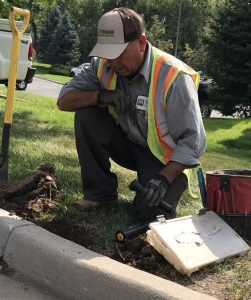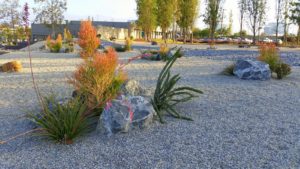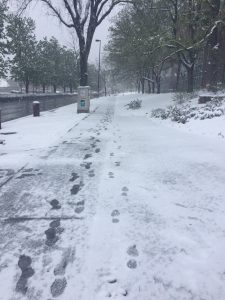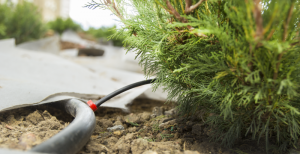Commercial Landscape Spring Checklist
Spring is in the air! The trees are blooming, the birds are chirping, and flowers are beginning to poke out of the dirt. This is the perfect time to get your commercial landscape property in pristine condition for the upcoming year. We all want a beautiful commercial property; in this article we will provide a few suggestions for a successful spring season!
Cleanup and Prep:
With the freshness of spring comes plenty of cleanup from the season before. This cleanup is an important first step to restore your commercial property to its former glory. Some keys areas for our Monarch landscape expert to focus on;
- Cleaning up debris

- Raking up leftover leaves, sticks or pine needles
- Trimming back perennials and grasses
- Removing excess mulch and leaf scraps from the base of your plants
- Checking any metal edging to make sure that it has not heaved over the winter
Lawn Prep and Maintenance:
Having a well-manicured, green yard is something that will increase the overall appearance of a property and have a lasting impact on the amount traffic and business your company attracts. We recommend starting by aerating your property. This process consists of poking small holes in the lawn, which allows water and fertilizer to seep in and reach the roots effectively. Monarch then recommends the application of both quality fertilizer and pre- emergent weed control. These applications are very helpful in preventing weeds and boosting your plant’s nutrients.
Irrigation System Startup:
Another crucial step when getting your commercial landscape property in order for the upcoming summer heat, is the proper preparation of your irrigation system. This process ranges from checking that the controls are correct, ensuring that the water pressure is unhindered, to replacing damaged parts. It may seem lengthy and challenging, however all these steps are important to avoid future unnecessary costs.
Spring Planting:
Spring is also a great time for your commercial landscape property to set itself apart from the rest. A great way to do this and also attract more visitors is by adding color to your property. Studies show a  beautiful commercial landscape can raise your property value and attractiveness by as much as 20%. To do this Monarch recommends adding some annual color such as snapdragons or latanas which will really make your landscape pop.
beautiful commercial landscape can raise your property value and attractiveness by as much as 20%. To do this Monarch recommends adding some annual color such as snapdragons or latanas which will really make your landscape pop.
What’s Next?
These steps can be challenging and overwhelming for any commercial property owner. This is where Monarch Landscape comes in. Our trained and certified professionals are here to help you achieve the commercial landscape property that you have always dreamed of. Click below to set up a meeting:









